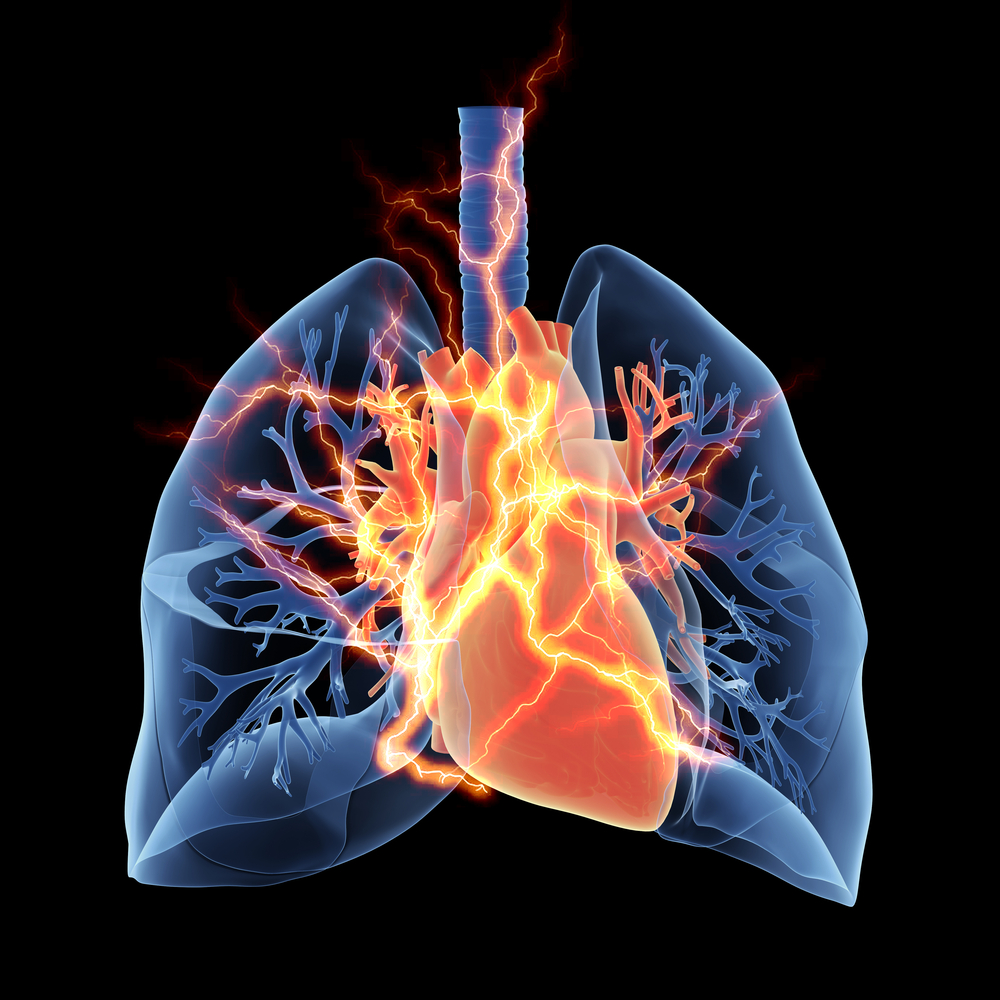ILD Associated with PH Linked to Worse Survival Outcomes in Study

People with both pulmonary hypertension (PH) and interstitial lung disease (ILD) have worse survival outcomes than ILD patients who don’t have PH, a study has found.
Lung function and blood flow tests were important predictors of overall survival in this patient population, according to the study, “Predictors of Mortality in Patients with Interstitial Lung Disease-Associated Pulmonary Hypertension,” published in the Journal of Clinical Medicine.
PH is one of the most common conditions to coexist with ILD — a group of disorders characterized by fibrosis, or scarring, of the lung tissue that surrounds the tiny air sacs (alveoli) and blood vessels.
Both conditions together — ILD-PH — are associated with worsening shortness of breath, decreased functional abilities, an increased need for oxygen supplementation, and reduced survival.
However, the physical criteria and blood flow parameters (hemodynamics) that predict mortality in people with ILD-PH remain unclear.
To provide more insight into this, researchers at the King Saud University in Saudi Arabia examined the medical records of 340 ILD patients to find those who also had PH and evaluate their physical and hemodynamic test results to find potential parameters that predict survival.
All participants underwent right heart catheterization — a diagnostic method to measure blood pressure in the heart’s pulmonary arteries and blood flow. The average follow-up time was 41 months — nearly 3.5 years — with a maximum of 11 years.
Patients were categorized as without PH, with PH, or with severe PH. Of the 340 selected, 96 patients had PH and 56 had severe PH.
Compared with ILD patients without PH, those with PH and severe PH had significantly worse physical impairment and worse lung function, shown by poorer performance on the six-minute walking test (6MWT) and more frequent prescriptions of oxygen supplementation.
Overall, 111 patients died — 47 without PH, 33 with PH, and 31 with severe PH — and two underwent a transplant.
The estimated survival probability at one year in ILD patients with PH and severe PH, compared with those without PH, was 75% vs. 84%, then 59% vs. 71% at three years, and 47% vs. 66% at five years.
Based on the underlying cause of ILD, people with idiopathic pulmonary fibrosis (IPF) and PH, compared with those without PH, had an estimated survival probability at one year of 56% vs. 62%, at three years of 36% vs. 46%, and 15% vs. 34% at five years.
In patients with ILD caused by connective tissue disease (CTD), those with PH versus those without PH had a survival probability of 82% vs. 95% at one year, 64% vs. 78% at three years, and 56% vs. 76% after five years.
The third group of patients had pulmonary sarcoidosis-related ILD, a condition in which small clumps of inflammatory cells build up in different organs, including the lungs. In this group, people with sarcoidosis and PH, compared with those without PH, had a survival probability at one year of 83% vs. 94%, and 83% vs. 87% at both three and five years.
The overall survival among all ILD-PH patients was significantly different among IPF, CTD, and sarcoidosis groups, with worse survival seen in those with IPF-PH than in those with CTD-PH and sarcoidosis-PH. In contrast, people with sarcoidosis tended to survive longer than those with CTD-PH, but this difference was not significant.
Parameters that predicted worse survival outcomes were found to be: a percent diffusing capacity for carbon monoxide (DLCO, a measure of gas exchange in the lungs) of less than 35%, a final blood oxygen saturation below 88% after the 6MWT, and a pulmonary vascular resistance of 4.5 Wood units or more (normal range is 0.25 to 2). In contrast, a 6MWT distance of less than 300 meters was not associated with worse outcomes.
The independent predictors of survival in ILD patients with PH and severe PH were an IPF diagnosis, lung function tests (forced vital capacity and DLCO), systolic pulmonary artery pressure (PAP), and cardiac index — a measure of heart performance based on body size. In the severe PH group, the only independent predictors of survival were IPF diagnosis and DLCO.
This result was consistent with other PH studies that “emphasizes the importance of diffusing capacity as a useful physiological parameter for identifying the highest risk of mortality in both ILD and non-ILD patients,” the researchers wrote.
In summary, the team concluded that “the overall survival of patients with IPF-PH was significantly worse than the survival of patients with other types of ILD with PH. Physiological (the percent of predicted [forced vital capacity] and DLco) and hemodynamic (systolic PAP and cardiac index) parameters were important factors independently associated with the outcome among ILD-PH patients.”
As most ILD-PH patients are routinely excluded from clinical trials testing PH-specific therapies, “future studies are highly needed to address the devastating complications of ILD-PH, particularly amongst those with severe PH,” the researchers added.







